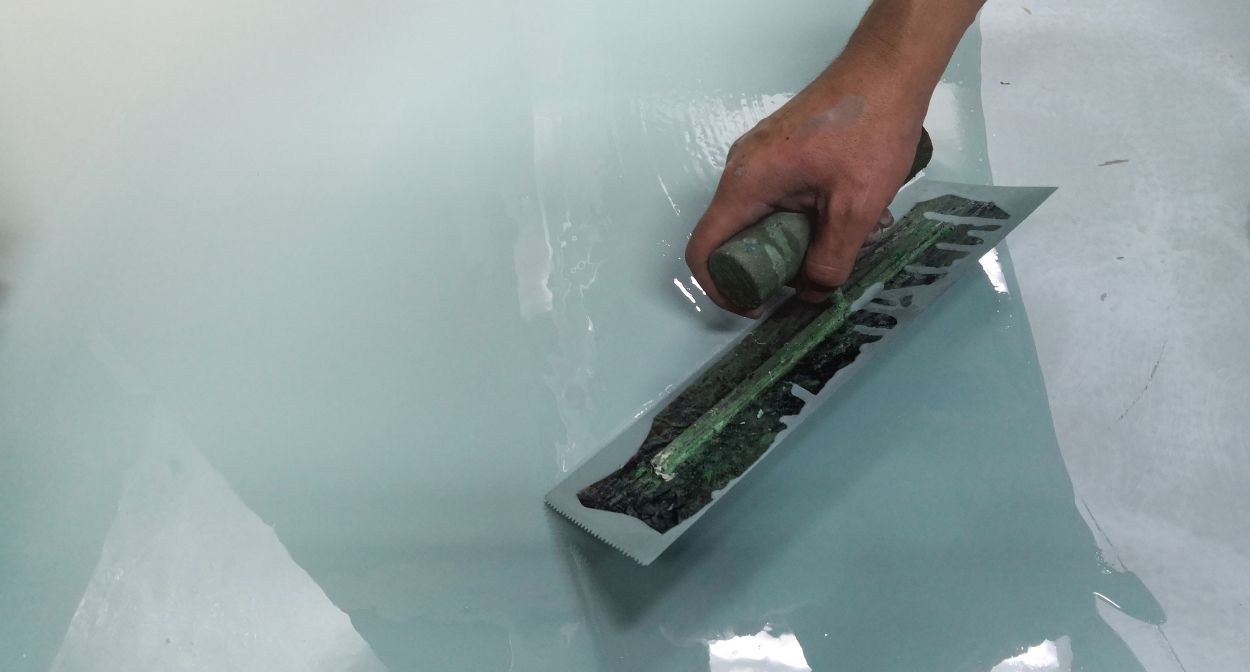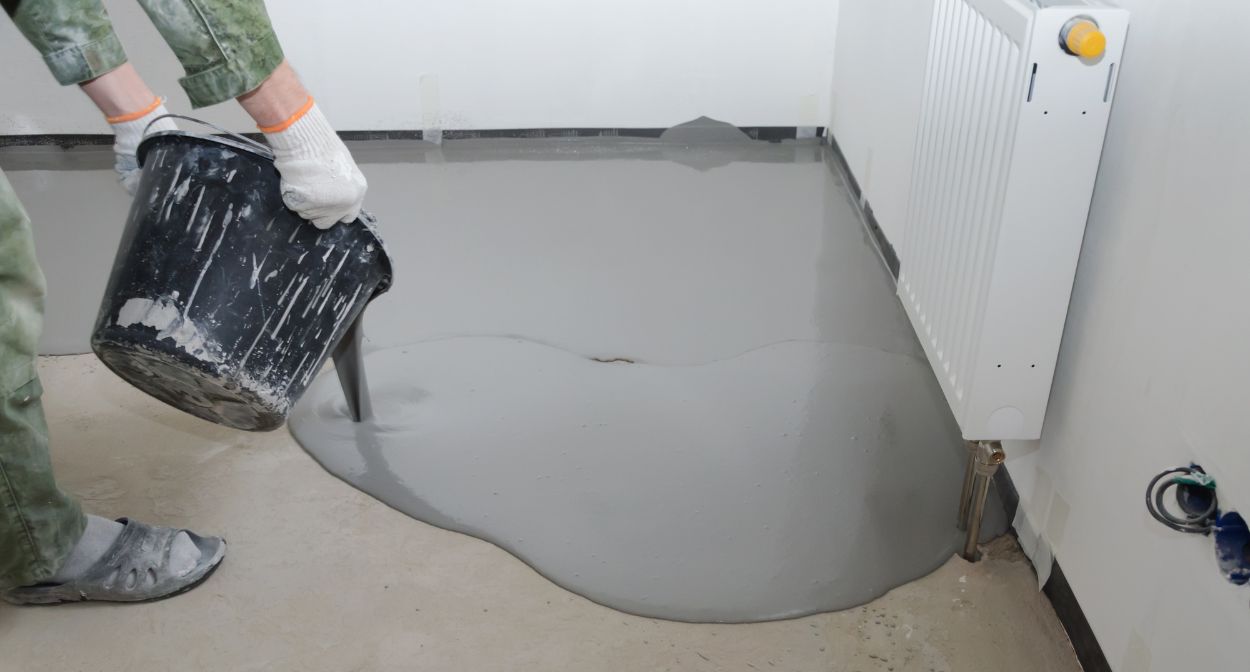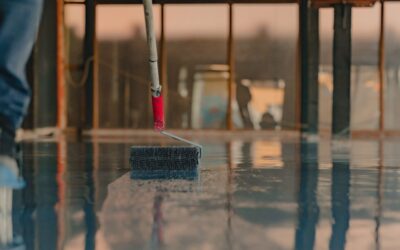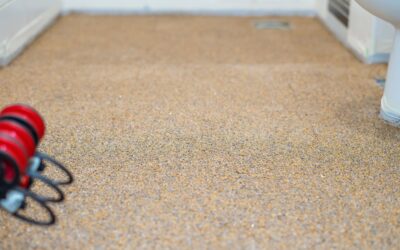Introduction
Self-leveling epoxy floors have been gaining popularity in recent years, thanks to their durability, ease of maintenance, and aesthetic appeal. These seamless, high-performance floors can be found in various commercial and industrial settings, as well as in residential spaces. In this article, we’ll dive into the benefits of self-leveling epoxy floors, how to install them, common mistakes to avoid, and costs to consider. So, let’s get started!

Benefits of Self-Leveling Epoxy
Durability
One of the main reasons people choose self-leveling epoxy floors is their impressive durability. These floors are resistant to wear and tear, making them an ideal choice for high-traffic areas. They’re also resistant to chemicals, water, and temperature fluctuations, ensuring that they maintain their appearance and functionality for a long time.
Ease of Maintenance
Another benefit of self-leveling epoxy floors is that they’re easy to maintain. Thanks to their seamless nature, there are no grout lines or joints for dirt and bacteria to accumulate. A simple sweep or mop is usually all that’s needed to keep these floors looking clean and shiny. Additionally, because they’re resistant to stains and chemical spills, they’re ideal for environments that require strict hygiene standards.
Aesthetics
Self-leveling epoxy floors are not only durable and easy to maintain, but they also look great. They offer a sleek, modern appearance that can be customized with different colors and patterns. This makes them an attractive option for both residential and commercial spaces.

How to Install Self-Leveling Epoxy Floors
Surface Preparation
Proper surface preparation is crucial for a successful self-leveling epoxy floor installation. Begin by thoroughly cleaning the existing floor, removing any dirt, grease, or debris. If the floor is uneven or has cracks, use a grinder or shot blaster to smooth and level the surface. Finally, apply a primer to help the epoxy adhere to the floor.
Mixing the Epoxy
Once the surface is prepared, mix the epoxy components according to the manufacturer’s instructions. It’s essential to use the correct mixing ratios and thoroughly blend the components to ensure a uniform, durable finish.
Applying the Epoxy
Pour the mixed epoxy onto the floor and spread it evenly using a squeegee or trowel. Be sure to work quickly, as epoxy has a limited working time. Once the epoxy has been spread, use a spiked roller to remove any air bubbles and ensure a smooth, even surface. Allow the epoxy to cure for the recommended time (usually 24 to 72 hours) before walking on or using the floor.

Common Mistakes to Avoid
Inadequate Surface Preparation
One of the most common mistakes when installing self-leveling epoxy floors is inadequate surface preparation. Skipping or rushing through this step can lead to poor adhesion, resulting in a floor that doesn’t last as long as it should. Always take the time to properly clean, level, and prime the surface before applying epoxy.
Incorrect Mixing Ratios
Another mistake to avoid is using incorrect mixing ratios for the epoxy components. This can lead to an uneven finish, poor curing, or a weak floor. Always follow the manufacturer’s instructions for mixing ratios and mixing techniques.
Insufficient Drying Time
Finally, be sure to allow the epoxy floor sufficient time to cure before using it. Walking on or using the floor too soon can damage the finish and compromise its durability. Patience is key when it comes to epoxy flooring.
Costs and Considerations
Material Costs
The cost of self-leveling epoxy flooring materials can vary depending on the thickness, color, and pattern you choose. On average, expect to pay between $3 and $12 per square foot for materials.
Installation Costs
Installation costs for self-leveling epoxy floors can also vary depending on factors such as the size and complexity of the project, as well as regional labor rates. On average, installation costs range from $4 to $15 per square foot. It’s worth noting that while DIY installation is possible, hiring a professional is recommended for the best results.
Long-term Value
Despite the upfront costs, self-leveling epoxy floors can be a cost-effective investment in the long run. Their durability, low maintenance, and aesthetic appeal can increase the value of your property and save you money on repairs and replacements compared to other flooring options.
Conclusion
Self-leveling epoxy floors offer a durable, low-maintenance, and attractive flooring solution for a variety of residential, commercial, and industrial settings. By understanding the benefits, installation process, and costs, you can make an informed decision about whether this type of flooring is the right choice for your needs. With proper installation and care, self-leveling epoxy floors can provide long-lasting, high-performance flooring for years to come.
Frequently Asked Questions
Can self-leveling epoxy floors be installed over existing floors?
Yes, self-leveling epoxy can be installed over existing concrete, tile, or other flooring surfaces, as long as the surface is properly prepared.
How long does it take to install self-leveling epoxy floors?
The installation process typically takes 2-3 days, including surface preparation, epoxy application, and curing time.
Are self-leveling epoxy floors suitable for outdoor use?
While some epoxy formulations are designed for outdoor use, it’s essential to choose a UV-resistant epoxy to prevent yellowing and degradation from sunlight.
Do self-leveling epoxy floors require a topcoat?
While not always necessary, a topcoat can provide additional protection and enhance the appearance of your epoxy floor.
How long do self-leveling epoxy floors last?
With proper care and maintenance, self-leveling epoxy floors can last 10-20 years or even longer.



